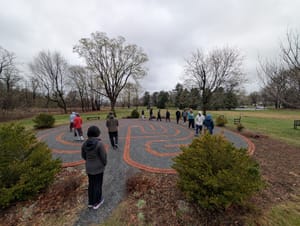The SDForum event I spoke at on Wednesday was fairly interesting. I got to discuss the future of new media with Anil Dash of Six Apart, Theresa Carey of Barron’s, and Ramneek Bhasin of Mobio Networks. The moderator was Steve Bengston of PriceWaterhouseCooper.
It was a lively discussion that focused primarily on mobile media, and its potential to replace and/or supplement PC-based media such as the web. Ramneek made the very apt point that for billions of the planet’s residents, the only way they are ever going to experience the Web is through a cell phone. This accounts for the rapid uptake of mobile data services in Japan, Korea, and parts of Europe: PC penetration is not very high in these places, so if people want to get online, a data-enabled phone is an ideal way to do that.
I’m skeptical, though, that this model will ever take off in the U.S. Here, where PC penetration is very high (and the number of TVs per household is even higher) there’s much less of a compelling reason to use your phone for web browsing, sending email, or watching TV shows. Why would you ever use a phone to do such things if you had a computer available to you? When I raised this objection, Anil pointed out that the two media are not mutually exclusive: Many people send text messages while watching TV, or use a laptop while sitting in front of a favorite TV show. And that’s true: But the way you’re using the phone is these cases is substantially different from the way someone in Japan (or, soon, in Africa) is using the phone. For us in America, the phone is a supplementary, not the primary, channel for communication.
The liveliest part of the discussion came during an exchange with a Sprint employee, who asked us what kinds of applications we thought would be most useful or interesting for a high-speed mobile data platform. On this point Anil and I agreed, though Anil expressed it far more eloquently: Open up the phone and the network, and let people hack it. If your platform is open and is easy to hack, it will attract the most innovative, experimental people–and they in turn will create the “killer applications” which we simply cannot predict ahead of time. That’s exactly what’s happening on the web, where the “View Source” control in your browser makes it a simple matter for anyone to become a developer. Today’s kids have tricked out their MySpace profiles, built up Blogger sites, and will soon be developing custom AJAX applications. If the carriers want to attract that kind of innovation, they need to open up their networks and their phones. Without it, the phone will never become as significant of a tool (or a toy) as the PC has been. And so far, U.S. carriers are simply not living up to that potential — none of them.
As a final note, I’ll list some of the tools/companies that are doing interesting things in new media. I started off the discussion by naming a few of these, but we didn’t talk much about them since the conversation turned quickly to mobile topics.
PBwiki — Wikis have a lot of potential but are far too counterintuitive for most people. PBWiki is the easiest wiki system I’ve seen yet, lowering the bar considerably. But why do wikis still require you to enter bizarre formatting codes? Where is my WYSIWYG Wiki?
Odeo — Radically simplifies the process of podcasting. Especially cool is its embedded Flash application that lets you record your voice and upload it to a podcast in one or two steps. Pretty good sound quality too.
Eventful — Well thought-out, user-driven database of upcoming events (primarily conferences, meetups, and concerts in the the real world)
Revver — Video sharing site that actually has a business model, by inserting ads (usually at the end of a video, in contrast to the way most do it) and sharing revenue with content creators. Although overshadowed by YouTube and Google Video, I think Revver is actually easier to use and superior in many ways. It’s used by the Mentos and Diet Coke guys and by the insane, brilliant Ze Frank.
Dabble — User-driven meta-video-sharing site, which collects information on videos available at any of the 240+ different video hosts, from YouTube on down.
BlinkX — A somewhat more mature video-search site.
Democracy — This video player makes it easy to find, download, and watch high-quality (not just 320×240) video from all over the net. Very easy to use and quite slick, albeit still a little buggy (it’s still in beta).
What’s missing from the new media landscape, in my opinion, is a good solution for live video webcasting. Part of the problem is architectural, in that Internet Protocol simply isn’t set up for efficient delivery of a massive data stream from one source to tens of thousands (let alone millions) of recipients, all in real time. Still, I think the opportunity is huge here. If Internet TV is ever going to rival broadcast TV, someone needs to come up with a way of delivering live video to thousands or millions of people at a time.
The company that delivered the live video of the SD Forum event claim they can do this, but the audience for this event is much smaller than what I’m talking about.


